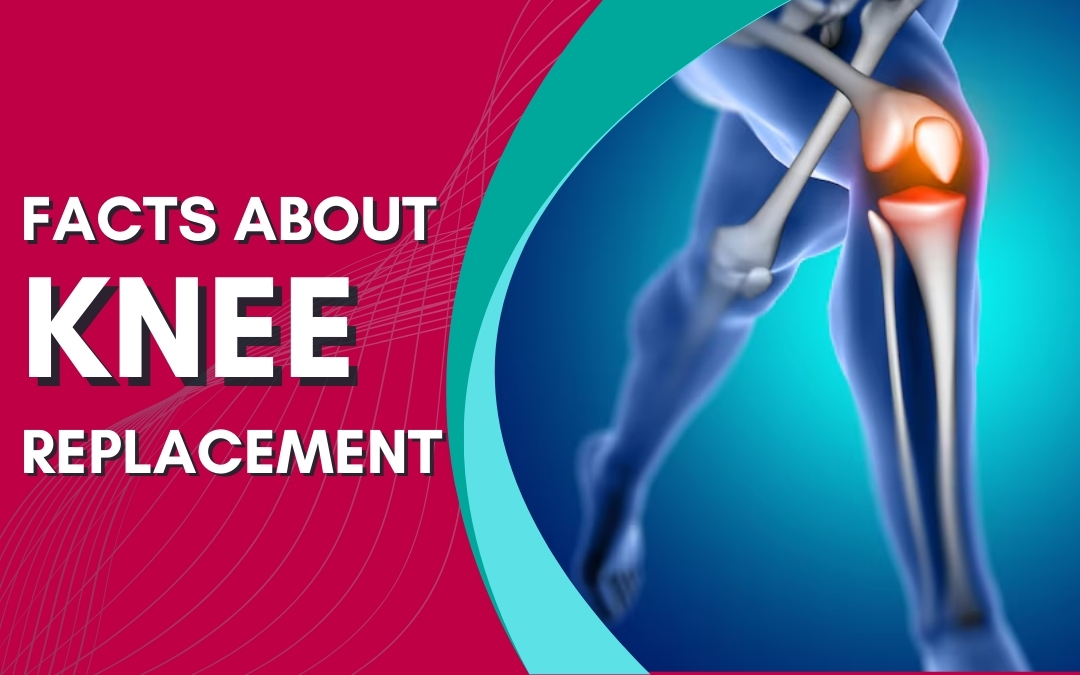What is a knee replacement?
- Knee replacement surgery involves replacing damaged parts of your knee joint with metal or plastic parts.
- It’s most commonly used to treat pain and stiffness in the knee joint caused by osteoarthritis.
- It may be recommended if other treatments or lifestyle changes have not worked and knee pain is affecting your daily life.
- Depending on the damage to your knee, it can be used to replace all of your knee joint (total knee replacement) or some of it (partial knee replacement).
- You’ll have the operation in hospital. It can take several months or more to fully recover afterwards.
- Knee replacements can last for 20 years or more and can significantly improve daily life for people with knee pain.
Why a knee replacement is done?
Reasons for having a knee replacement
- A knee replacement may be recommended if knee pain is having a big effect on your life and alternatives to a knee replacement have not worked.
- Most people who have a knee replacement have pain and movement problems caused by osteoarthritis (a condition that causes joints to become painful and stiff).
- Other conditions a knee replacement may be used to treat include gout and sports injuries, but this is not common.
- The knee usually moves smoothly because the ends of the bones are covered with a layer of tough tissue called cartilage. If the cartilage is worn away by osteoarthritis or damaged by an injury, the bones rub against each other, making your joint painful and stiff.
- During a knee replacement, the damaged parts of your knee are replaced with metal and plastic parts.
- Knee replacements are usually very successful and result in no pain in the knee and better movement.
What happens during a knee replacement?
- If you’re having a knee replacement, you’ll usually go into hospital on the day of the operation.
- Just before the operation, a nurse will take you to the operating theatre.
- You’ll either have a general anaesthetic (you’re asleep during the operation) or a local anaesthetic in your spine (you’re awake but will have no feeling from the waist down).
- The operation usually takes about 1 to 2 hours. The type of surgery you have depends on things like how damaged your knee is, your age and your general health.
Total Knee Replacement
A total knee replacement is the most common type of knee replacement. This is where the lower end of your thigh bone and the upper end of your shin bone are replaced with metal and plastic parts.
The main steps of a total knee replacement are:
- The surgeon makes a cut down the front of your knee and moves your kneecap to the side so they can get to the knee joint behind it.
- They cut away the damaged ends of your shin bone and thigh bone.
- New parts are fitted over the ends of both bones to create the new joint. The parts are usually made of metal and plastic. Some people may also have the back of the kneecap replaced with a new part.
- The kneecap is put back into place.
- The surgeon closes the cut on your knee using stitches or clips and covers it with a dressing and bandage.
- After the operation, you’ll stay in a recovery room until you’re fully awake, where you may be given medicines to help with the pain.
Partial Knee Replacement
A partial knee replacement is used when you have arthritis in one half of your knee. Only the bones on the affected side are replaced with metal or plastic parts.
It’s a similar operation to a total knee replacement, but the cut on your knee will be smaller and you should have a quicker recovery.
Alternatives to a knee replacement
Common alternatives to a knee replacement
There are other treatments that may be tried before having a knee replacement, as well as other types of surgery that may help.
Treatments that may be tried first before having a knee replacement, your doctor will talk to you about non-surgical treatments to help with your knee pain.
These may include lifestyle changes and some types of pain relief, such as:
- Weight loss to reduce the strain on your knee if you’re overweight
- Low-impact exercise such as swimming, walking or cycling, and muscle strengthening in the knee – a physiotherapist may advise and support you with exercising
- Using walking aids
- Wearing special footwear or insoles for your shoes
- Pain relief medicines, gels or creams
- Hydrocortisone (steroid) injections – an injection into the knee joint to help with pain and swelling
If you’ve tried these and they have not helped, your doctor may talk to you about surgery to repair or strengthen the knee or having a knee replacement.
Other types of surgery
Your doctor may talk to you about other types of surgery that do not involve a knee replacement if these are an option for you.
These are not suitable for everyone but might include:
- Arthroscopy – where fluid is flushed into the knee joint to clear out any loose bone and cartilage
- Osteotomy – where the shape of your shin bone is changed to reduce pressure on the worn or damaged part of your knee
- Microfracture – where small holes are made in the surface of the bone to help new cartilage grow

